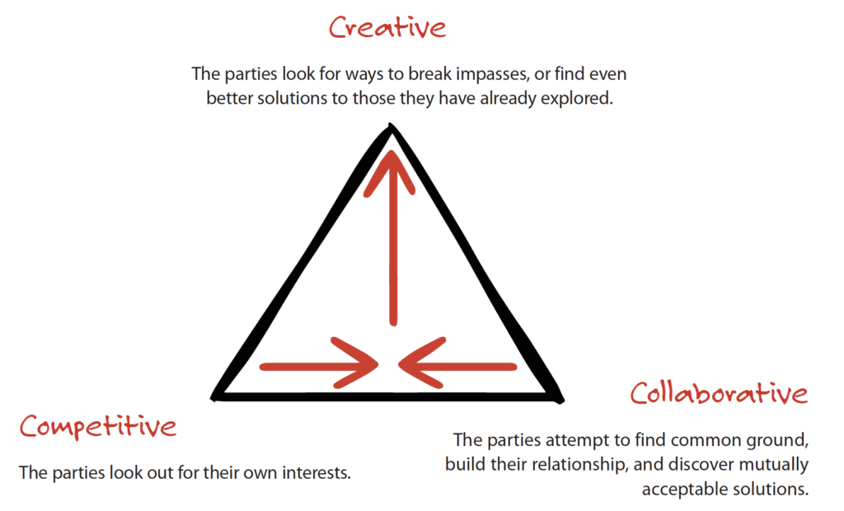“If you are curious, you’ll find puzzles all around you. If you are determined, you will solve them.”
— Erno Rubik
Effective sales negotiation is a lot like a Rubik’s cube. This is because when people think of a Rubik’s cube, they tend to fall into one of two camps. Either the puzzle represents an impenetrable mystery that only the extremely smart and naturally gifted can solve. Or, for those who know its few basic concepts, it’s more like a simple magic trick – while it might take a bit of practice, solving the cube is ultimately within everyone’s grasp.
The secret behind solving a Rubik’s cube is similar to that of effective sales negotiation. When the average person encounters a skilled negotiator, they might also view it as an arcane craft that’s exclusively available to the gifted few. But once you understand the different parts of the process – and how those parts fit together – the core skills and techniques become clear, simple, and accessible.
At its core, every negotiation has three distinct dimensions. Entering a negotiation without recognizing this is like to trying to solve a Rubik’s cube while only ever acknowledging a single side.
The three dimensions of effective sales negotiation can be described as follows:

Effective negotiating must be “situational”
Because there are so many factors at play during a negotiation, a skilled negotiator must determine the extent to which each dimension applies to their specific situation. While some negotiations may be inherently competitive, others may be inherently collaborative. If you’re negotiating with an aggressive personality type who’s primary focus is saving face and asserting their dominance (maybe they’ve seen Scarface a few too many times), then the competitive dimension will define the interaction. On the other hand, if you’re dealing with a deeply empathetic person who’s after a long-term mutually beneficial relationship, then collaboration will set the tone of discussion.
Be prepared to adapt as the situation changes
It’s important to remember that each of the three dimensions can take center stage at different times within the same negotiation. When you first meet the other party, for example, there’s a good chance you’ll be focused on building rapport and laying the foundation for a relationship (the collaborative dimension). As the discussion moves towards specific terms of the agreement, like price or delivery time, the tone of discussion will likely become more focused and competitive. The key to effective sales negotiation is to comfortably work in – and move between – each of these dimensions as the situation requires it.
Into the Creative dimension
While you might start a negotiation in the Competitive or Collaborative dimensions, this is rarely the case for the Creative dimension, which is used to break through a stalemate or gridlock. When you reach a point where no more concessions can be made without infringing on core organizational interests, then the negotiation can move forward only when the Creative dimension becomes more dominant. Generally speaking, it’s in both parties’ best interest to spend as much time as possible in the Creative dimension. After all, this is where imagination and ingenuity can truly shine, leading to novel solutions, exceptional outcomes, and the increased likelihood of a lucrative long-term partnership.
To learn more about our approach to developing the right situational negotiation skills, click here. Keep an eye out for future RED BEAR blog posts, where we’ll take a closer look at each of the three dimensions and offer more detailed advice on how to navigate them effectively.

